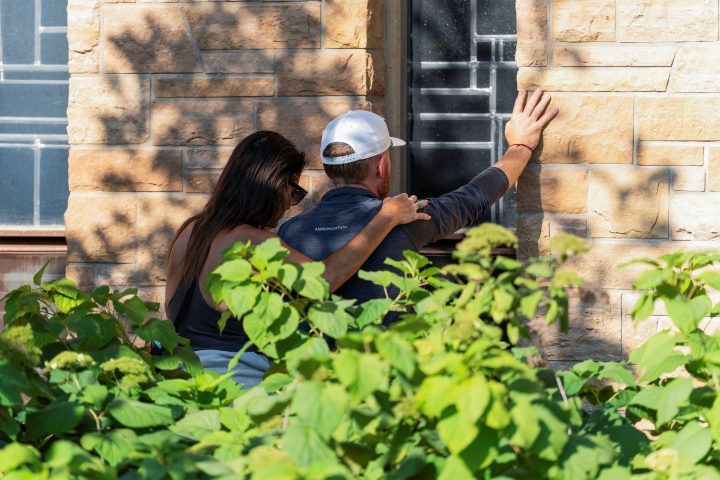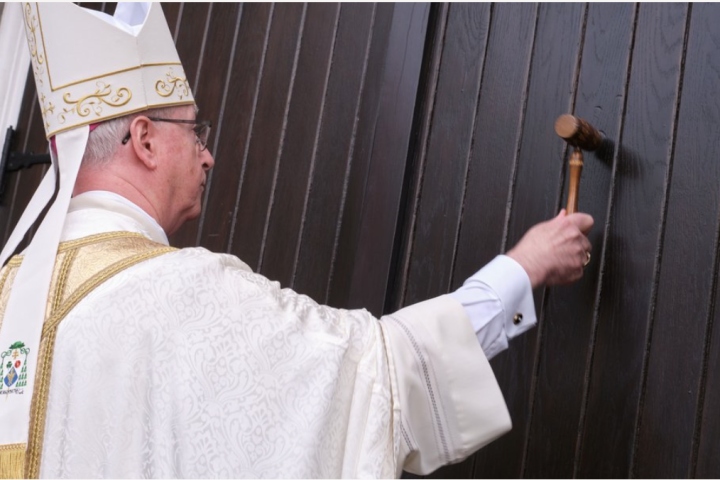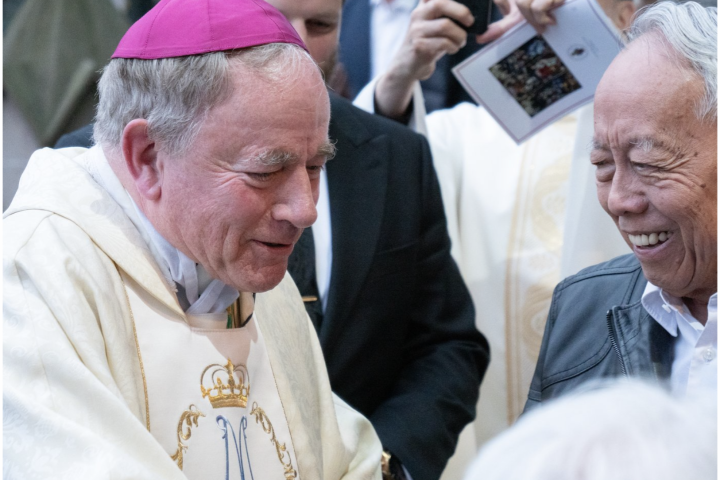This feels like a time to be remembered for Catholic journalism in Canada.
At the end of September, the Canadian Conference of Catholic Bishops re-opened the doors of its annual plenary assembly to media and observers for the first time since COVID lockdowns slammed pretty much everything shut.
The next day, a hardworking partnership comprising Paul Schratz and Terry O’Neill at The B.C. Catholic, journalist Laura Ieraci formerly of Montreal’s Catholic Times and Vatican News, Matthew Marquardt and Dominic Chan of the St. Monica Institute, Andrew Erhkamp of the Edmonton Archdiocese, and moi from The Catholic Register, launched, simultaneously, two complementary initiatives.
One is a 12-week online certificate program in explicitly Catholic journalism that we call Telling Truth in Charity. The other is a revival of the Canadian Catholic News service as a robust website, canadiancatholicnews.ca, to help Canadian Catholics share their stories of what it means to be a Canadian Catholic.
It has already taken a huge amount of work, all of us working off the sides of our desks, just to get to the launch pad(s). Time will tell, and the Holy Spirit will guide us toward, whatever the ultimate outcome should be. Yet I have complete faith the fruits will justify the labour. We will give people from all walks of life formation in fundamental journalistic skills to go out and find the stories Canadian Catholics want – and need – to share. And we will provide the home space where those stories can be published for all to encounter.
Having the privilege of teaching the introductory session of Telling Truth in Charity (we actually ran an eight-week “beta” version of the course last winter-spring, and the results were so gratifying we agreed to proceed with the full version), I used what’s become my standard image for defining Catholic journalism. It’s a Venn diagram.
In one circle of the diagram is our Catholic faith. In the other Venn circle is our journalistic vocation. In the centring intersection of the circles is Christ. “We are Catholics. We are journalists. We do journalism for Christ,” I said.

Laura, in her inimitable firmly diplomatic way, corrected: “We do journalism with Christ.” And so we do.
Not to pretend there is anything radically new about that. Long generations of Catholic journalists have done journalism for, errr, with Christ. What is new is renewal. The past two decades or so have not been fertile for the calling of journalism generally, and for Canadian Catholic journalism in particular. As Register Managing Editor Mickey Conlon points perspicaciously out, there used to be 13 news outlets across the country that were explicitly Catholic by name and nature. Now there are two: The Register and The B.C. Catholic. So … sacrificial times to launch these ventures? Yes … except …
“The good news today is that Catholics are still reading, listening, and watching Catholic materials. The better news is that the numbers who are reading, listening, and watching have been going up,” Greg Erlandson writes in The Catholic Journalist, a publication of the Catholic Media Association.
Erlandson cites survey data from the Centre for Applied Research in Apostolate (CARA) to flesh out his good-better assertion:
• The number “watching religious or spiritual video content “nearly doubled from 24 per cent in 2011 to 45 per cent in 2023.”
• Religious spiritual audio content listenership has “more than doubled from 13 per cent to 29 per cent.”
• Readership of print publications has remained level while online publications have seen their eyeball percentage quadruple from three to 13 per cent, and almost a quarter of Catholics get “information about the Church from print or online newspapers. Only parish bulletins or word of mouth rank higher.”
Those are, of course, American numbers. I’m not aware of any similar data being available for Canadians. I’m also self-aware enough to know it’s in my self-interest to believe CARA’s good-better U.S. Catholic media data is just as good-better in this country. Yet there’s anecdotal support for the claim.
The Register recently published special supplements on addiction-recovery and human trafficking, portions of which The B.C. Catholic will be publishing in upcoming weeks. We asked subscribers and supporters for financial help. The response was astonishing in its generosity, as two pages listing those deserving thanks attest. Somebody, somewhere read the initial appeal. And, man, did they feel a need to see us through. In fact, that’s mirrored in a myriad of ways that Catholics remind us of the importance, not of what we do just as journalists, but that we do it for, errr, with Christ.
The primary thing we do with Christ as Catholic journalists is evident in the very name of the just-launched certificate training program, Telling Truth in Charity.
I sought to explain this during the first week’s class by noting that, common to all (proper) journalism, are listening, observing, questioning, and producing as faithfully as humanly possible the truth of the event, the interview, the factual dig, in order to connect it to an audience that most often knows little or nothing about it.
The Catholic part is like unto it in that it does all those things but does them “all with the Catholic faith in the journalist’s ears, eyes, heart and soul.” Not to suppress or distort the truth but to elevate it, ennoble it, make it worthy as charity, i.e., as a humanly limited yet always God-directed expression of Christian love.
In his virtual-link address to the CCCB plenary on Sept. 25, Cardinal Bishop Tagle of the Philippines used the word “optic” to explain something very similar in the context of reform of the Roman curia, which might seem at first blush to be as far from journalism as it’s possible to get. Yet Cardinal Tagle, pro-prefect in the dicastery of evangelization, emphasized that curial reform is to be seen as an “optic” for envisioning an infinitely greater good.
“(Reform is) not an end. It’s a means to effective evangelization for the missionary conversion of the whole Church … of the whole of Creation,” Cardinal Tagle said.
Just so, Catholic journalism is not an end. It’s a means for telling truth in charity. Otherwise, it would just be another form of fish wrap, as the old description of newspapers had it, or click-bait in more recent jargon. Telling truth in charity is a contribution to effective evangelization for the missionary conversion of the whole Church, the whole of creation.
It’s vital to stress that neither the term “missionary conversion” nor “evangelization” should be confused, in any context and particularly not in a Catholic journalistic context, with shouting Biblical snippets through a bullhorn. Rather, it’s akin to what then-Cardinal Ratzinger explains in his work The Divine Project is the function of the Bible itself as an “expression of God’s long struggle with (humanity) to make himself understood (and) also an expression of (humanity’s) long struggle to understand God.”
Not even the shy egomaniacs of journalism would, obviously, dare to compare themselves with the writers of Scripture, which would be hubris, not mere egotism. But the struggle for understanding that Cardinal Ratzinger pinpoints is very much at the heart of (real) journalism, and the struggle for God-infused understanding – the telling of truth in charity – is the essence of Catholic journalism.
This period in the fall of 2023 seems a time to recognize that the struggle is bearing spiritual fruit.







